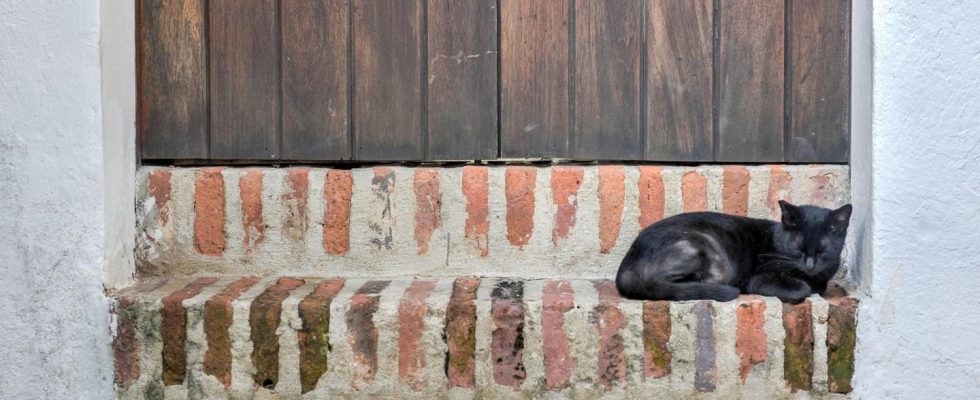San Juan
Puerto Rico wants to remove street cats from tourist areas
An uncertain fate awaits the cats in Puerto Rico’s capital San Juan
© Imago Images
Puerto Rico wants to get rid of hundreds of street cats: the animals are to disappear from the historic port area of the capital San Juan. There is a concrete plan for this.
They are photographed and filmed – and fed and adored by animal lovers: The street cats in Puerto Rico’s capital San Juan are legendary and also known worldwide tourism known. But in the historic old town of the metropolis, the animal activity is set to come to an end in the coming months.
As several American and English-language media outlets report, the US National Park Administration this week presented a plan through which all… Street cats should disappear in the tourist port area of the Caribbean metropolis.
The federal authority will commission an animal protection organization to remove the cats. The plan concerns about 200 animals in an area of the historic fortress “ElMorro” on an area of around 0.3 square kilometers, reports the AP news agency, among others.
According to the US National Park Service, the project is for the benefit of visitors and employees in the historic complex in order to prevent the transmission of diseases. Puerto Rico is a foreign territory of the USA, which is why the American National Park Authority is responsible there.
Cats in Puerto Rico are cared for by animal rights activists – but the animals are multiplying too much
The street cats of San Juan are cared for, fed and neutered by animal rights activists so that they do not multiply too much. But apparently this effort could not prevent the population there from increasing significantly.
Now all feeding stations should be in the historic one harbor area must be eliminated – unless they are connected to live traps intended to catch the cats, according to the US authorities’ specifications. The animals should then be given to new owners if possible or at least continue to live in animal shelters.
But the plan also contains an unmistakable threat: If the cats are not caught by animal rights activists within six months, a company will be hired to remove the animals. There will only be a postponement if at least progress can be seen in the implementation of the plans. There were simply far too many cats living in this area.
Animal rights activists criticized the project. Six months is far too little time to catch and house all the cats, according to an organization that looks after the animals there every day. In any case, it is hardly possible to find private owners for such a large number of stray cats.
However, the national park administration seems to be adamant. She has been complaining for months about the high number of animals in the historic port of San Juan. The tourist complex smells of excrement.
Unneutered cats reproduce at a high rate – the problem also exists in many places in Europe. Even in Germany, according to animal rights activists, an estimated two million stray cats are struggling to survive. The solution to the problem is consistent castration and identification of the animals.
Cats are pets and can hardly survive without human care. The animals are able to catch mice and other prey, but not to a sufficient extent for food.
Without a human home, wild cats therefore have a short life expectancy. Kittens often die after just a few weeks or months from malnutrition and disease if they are not at least provided with food by humans.
Sources: AP, ABC News, US National Park Service“USA Today”
New non-fiction book
Kitty mummies and Garfield’s stripes – surprising facts about cats
Read at stern+: A professor writes about genetics and field research – and in the case of Jonathan B. Losos, the result is an exciting non-fiction book. Animal lovers find out how the cat once came “from the savannah to the sofa”.


